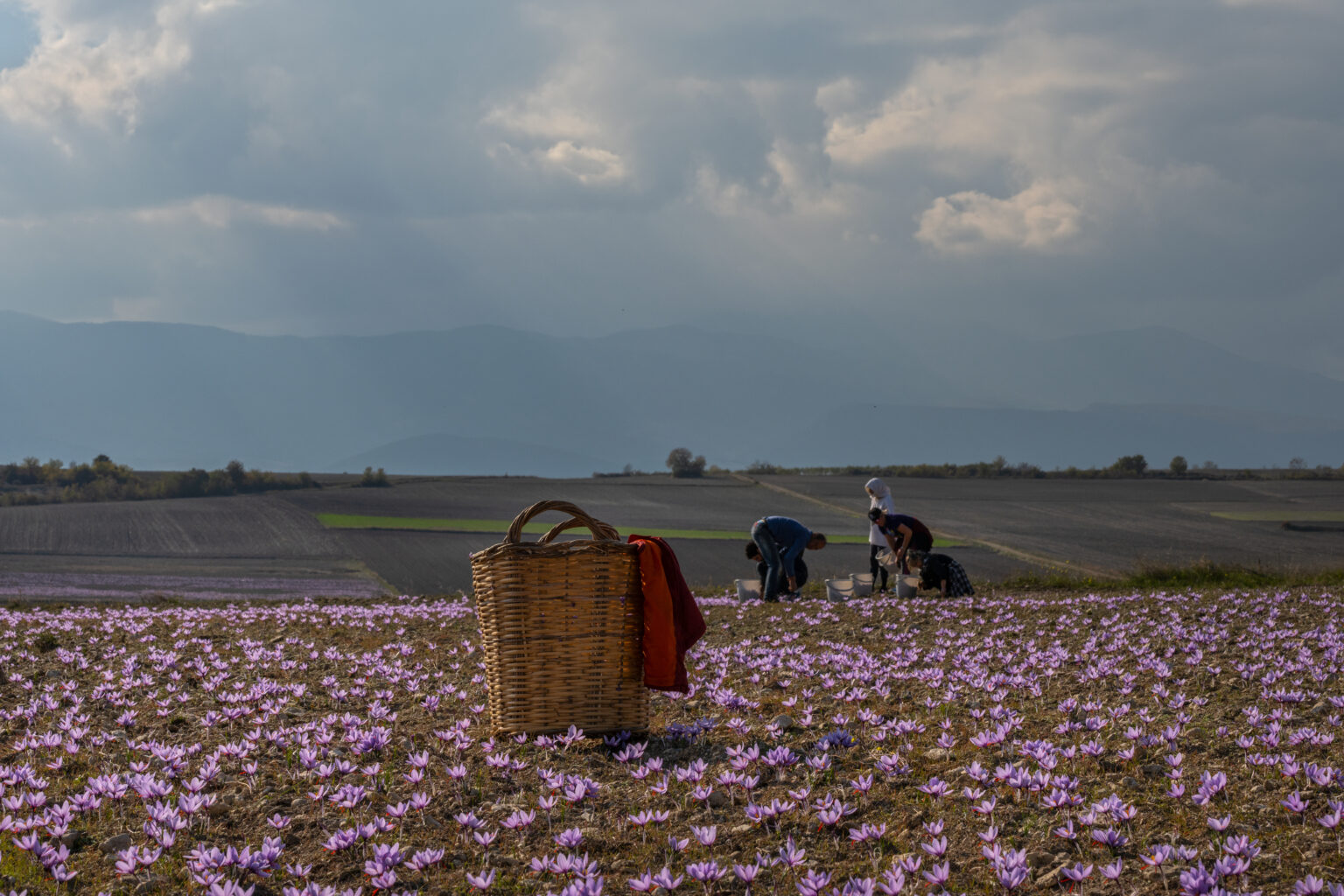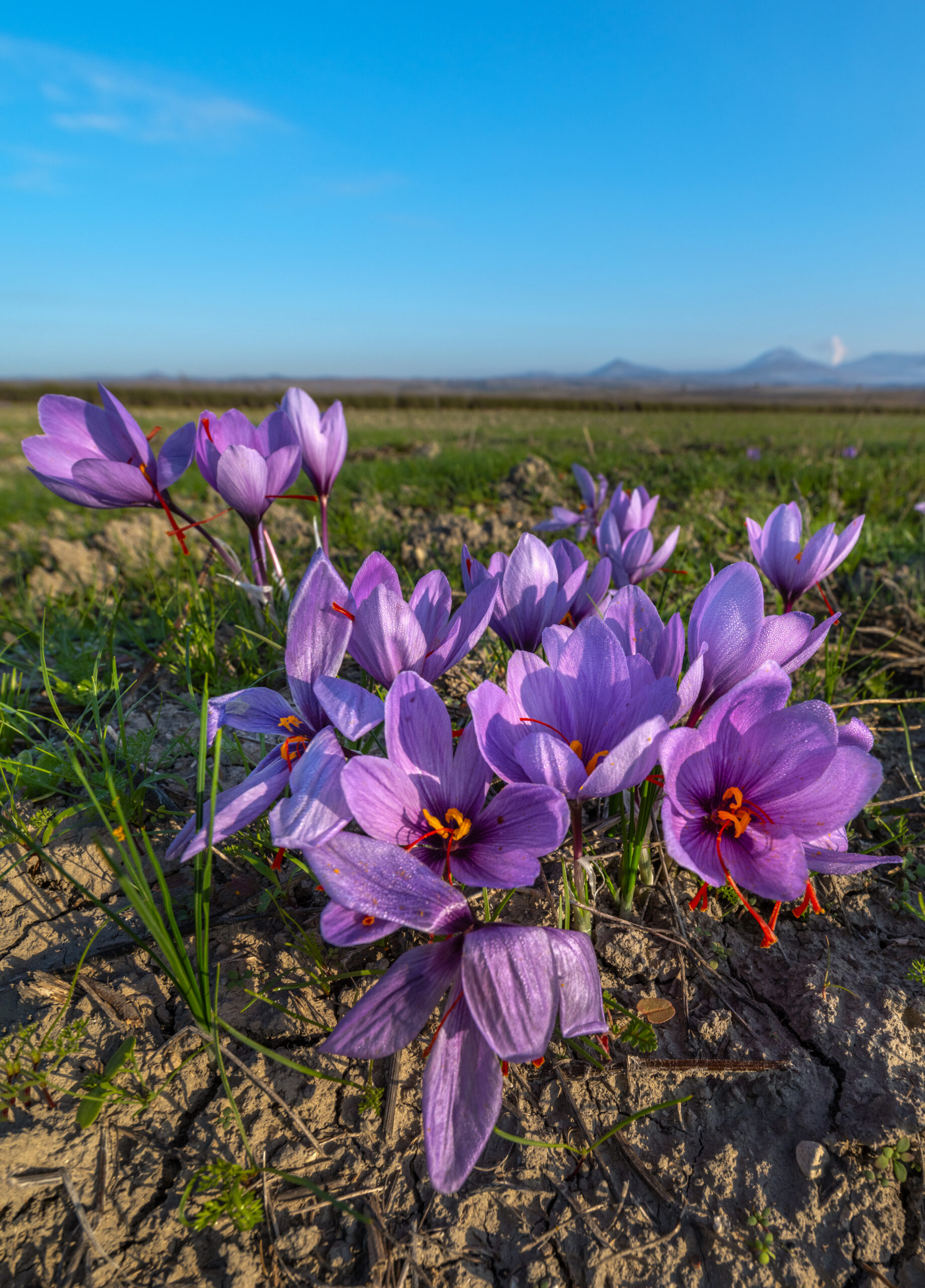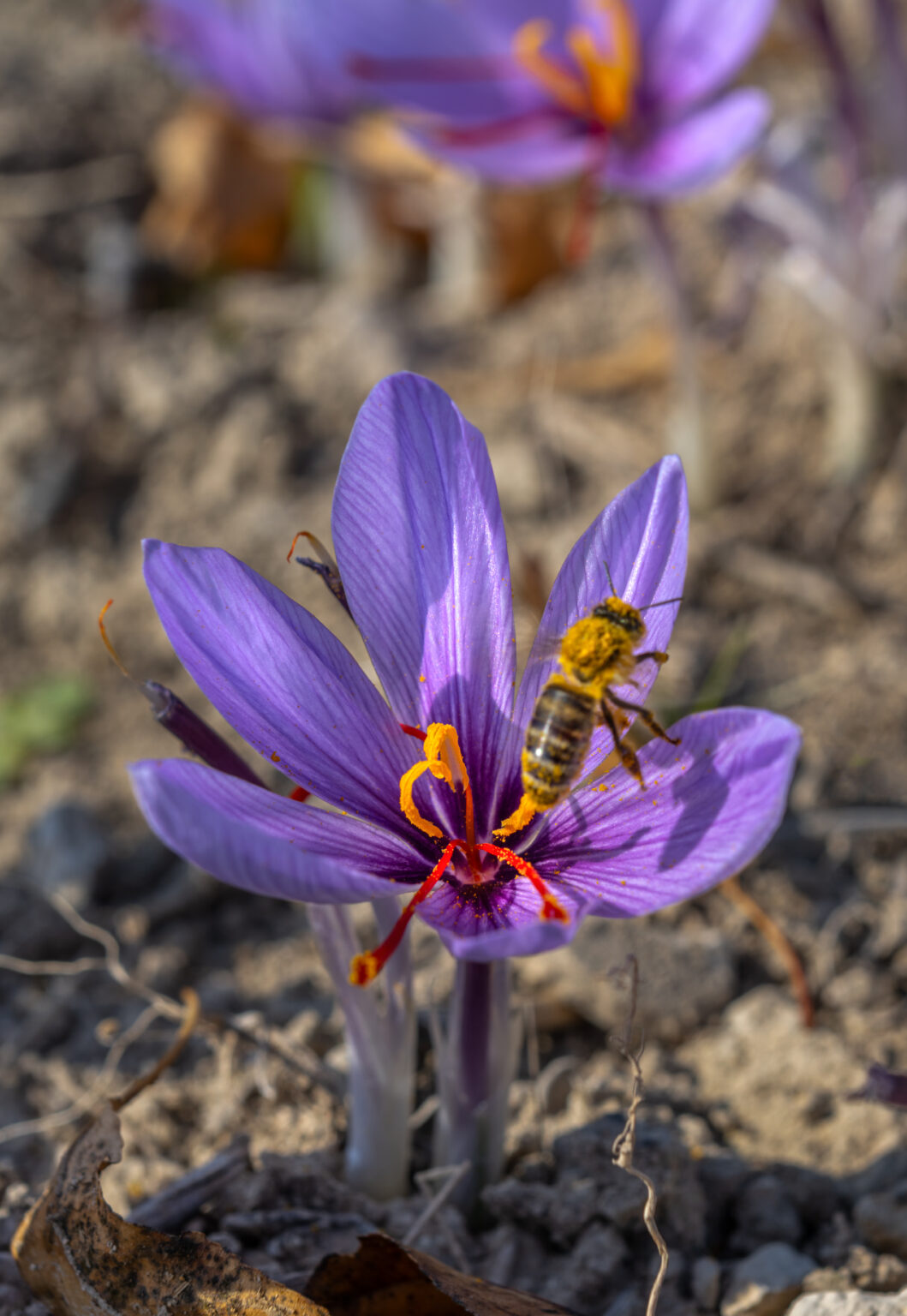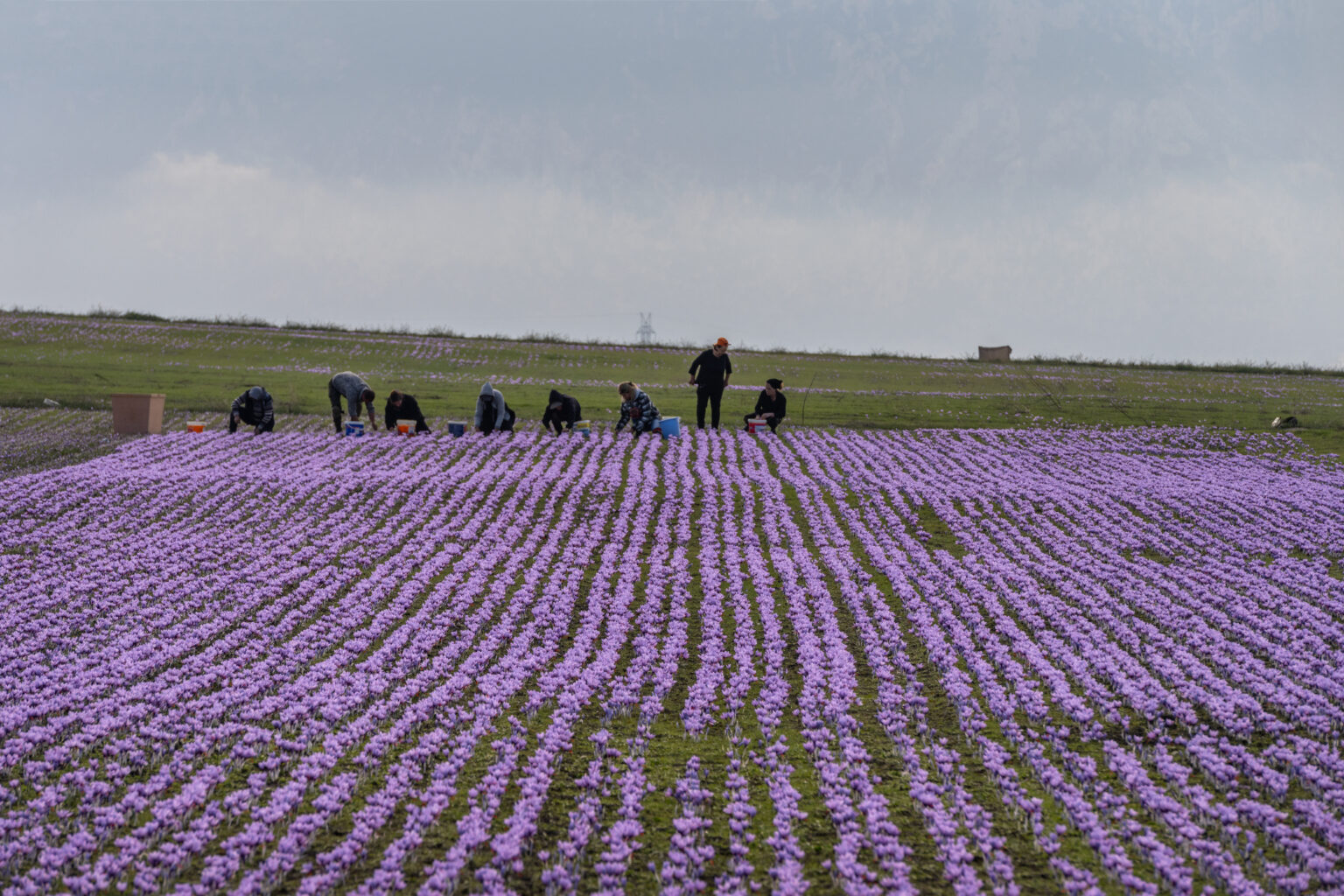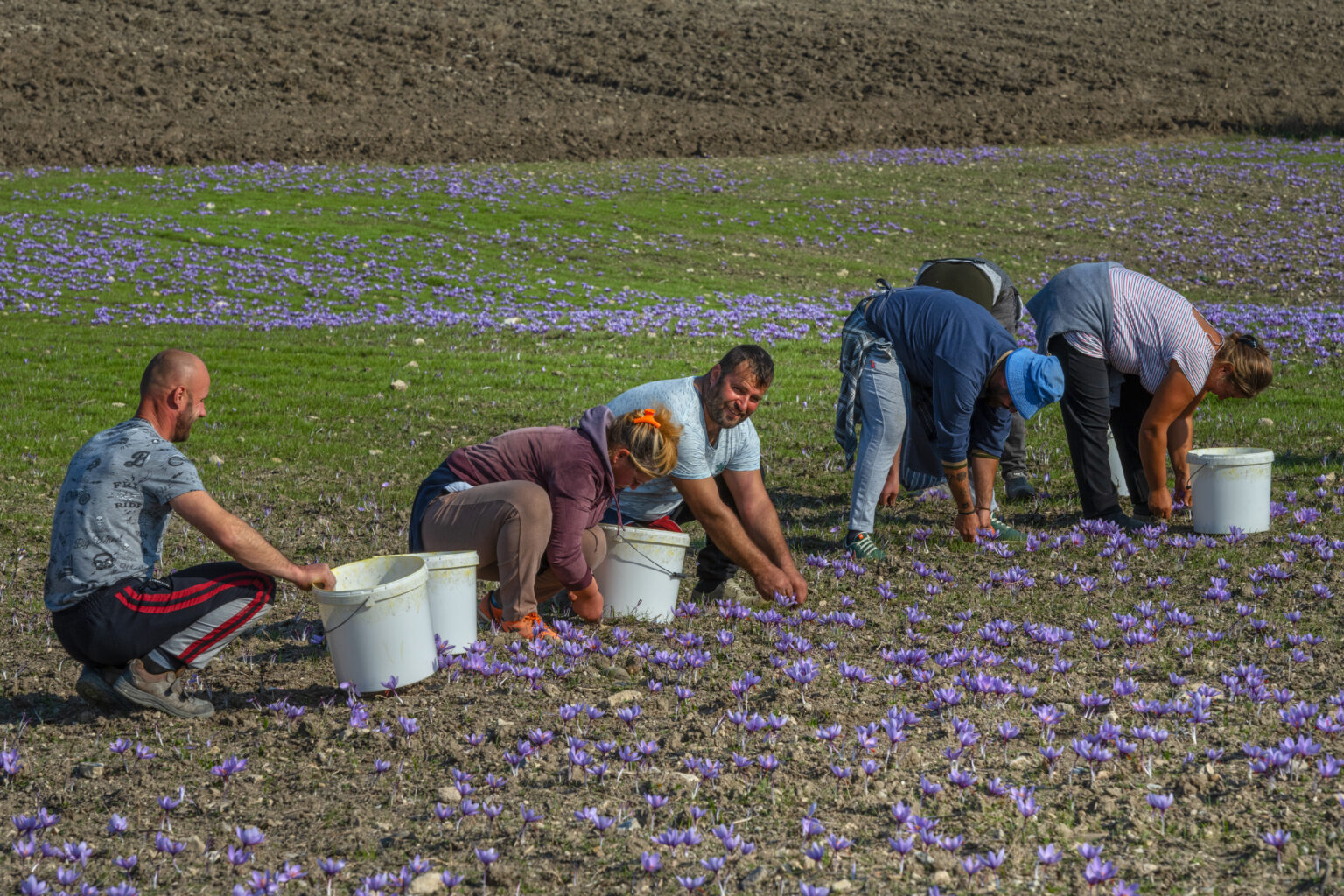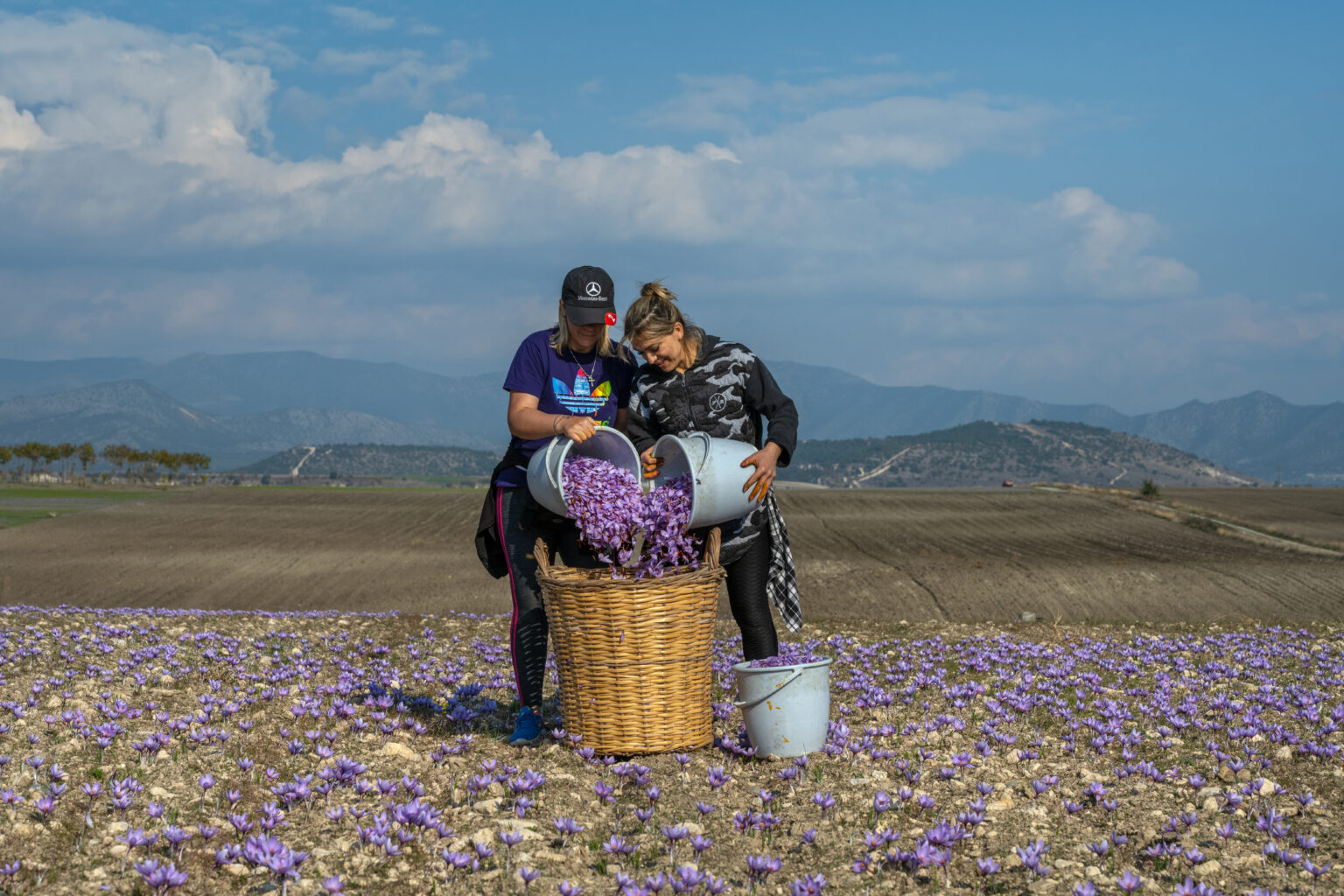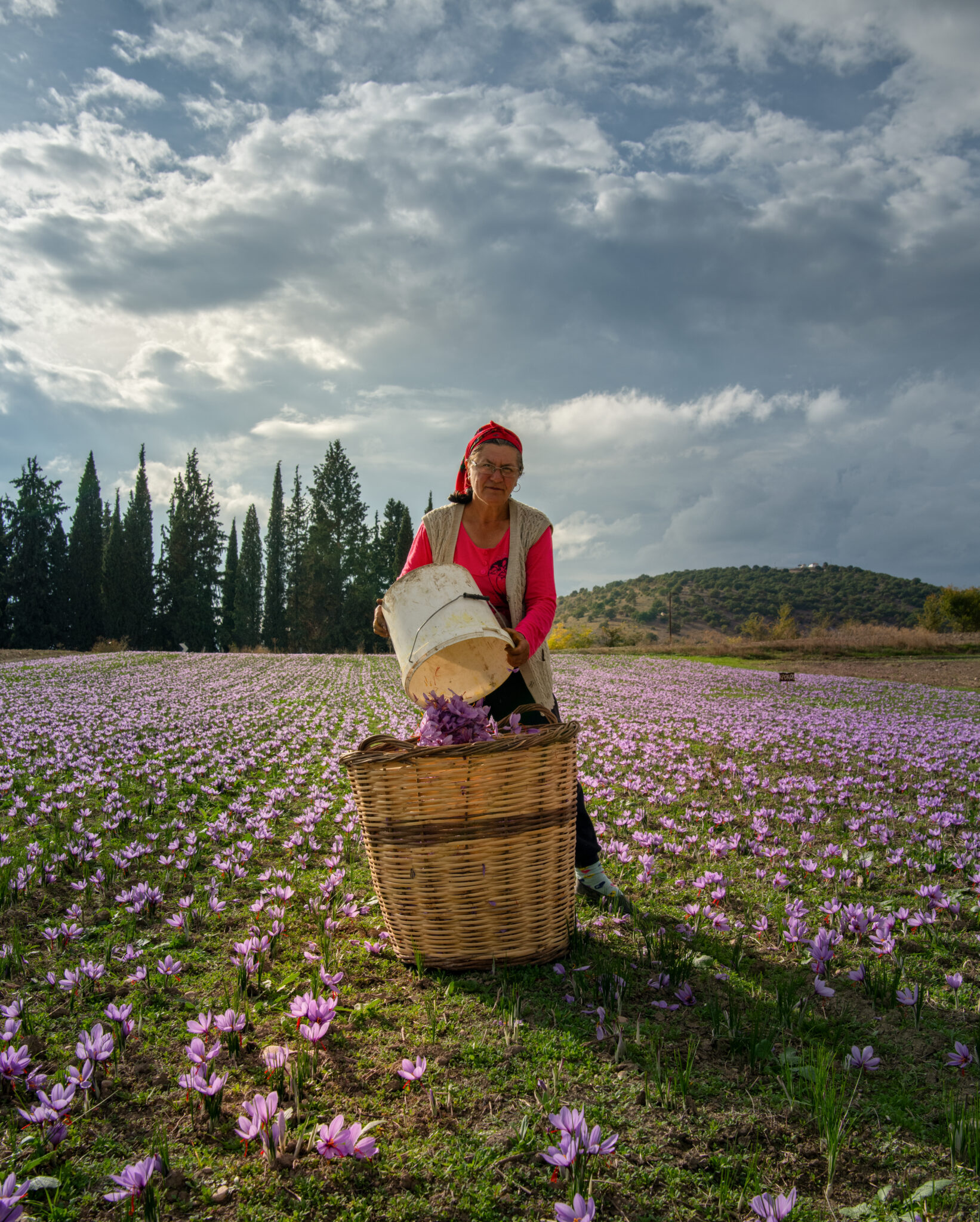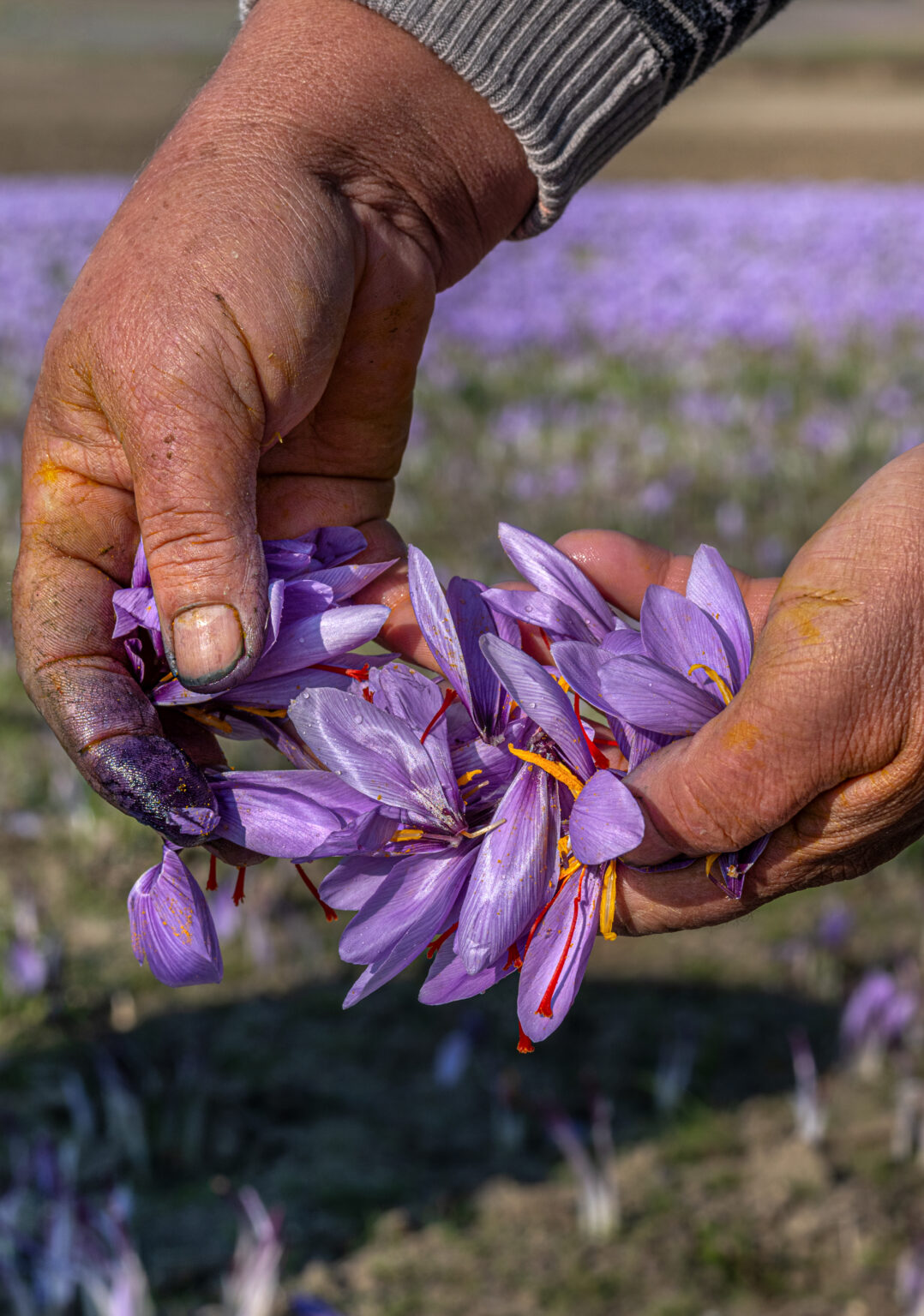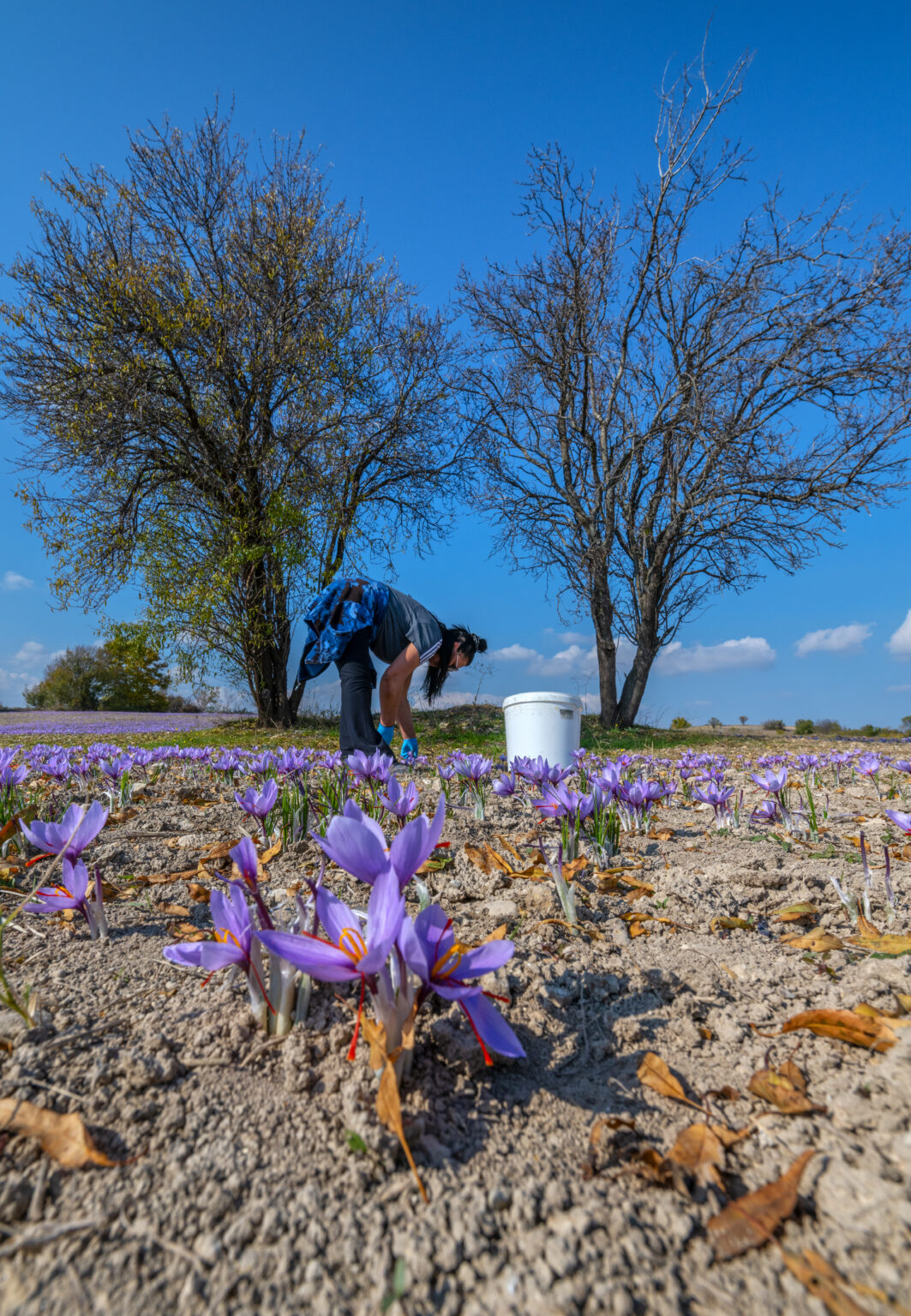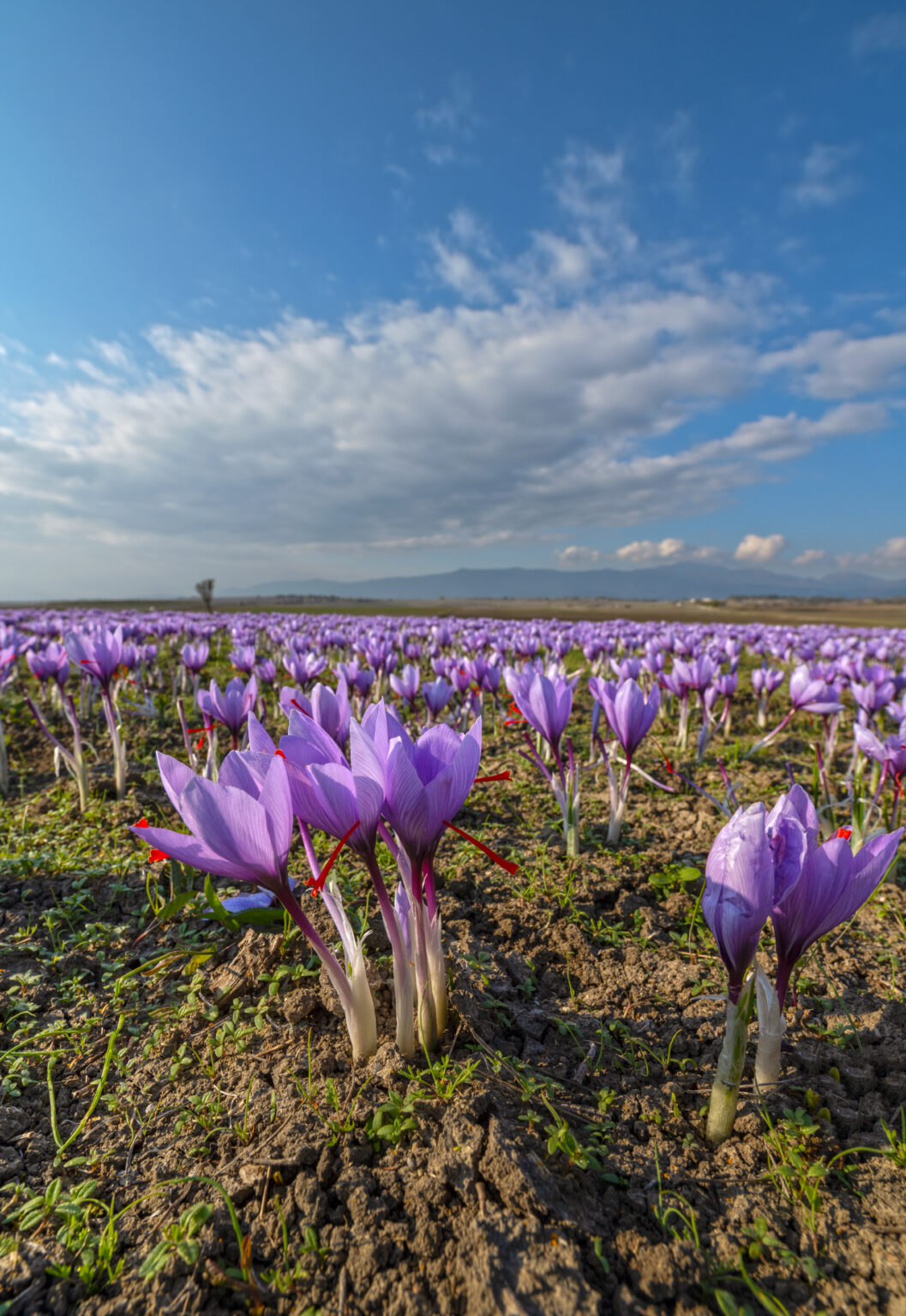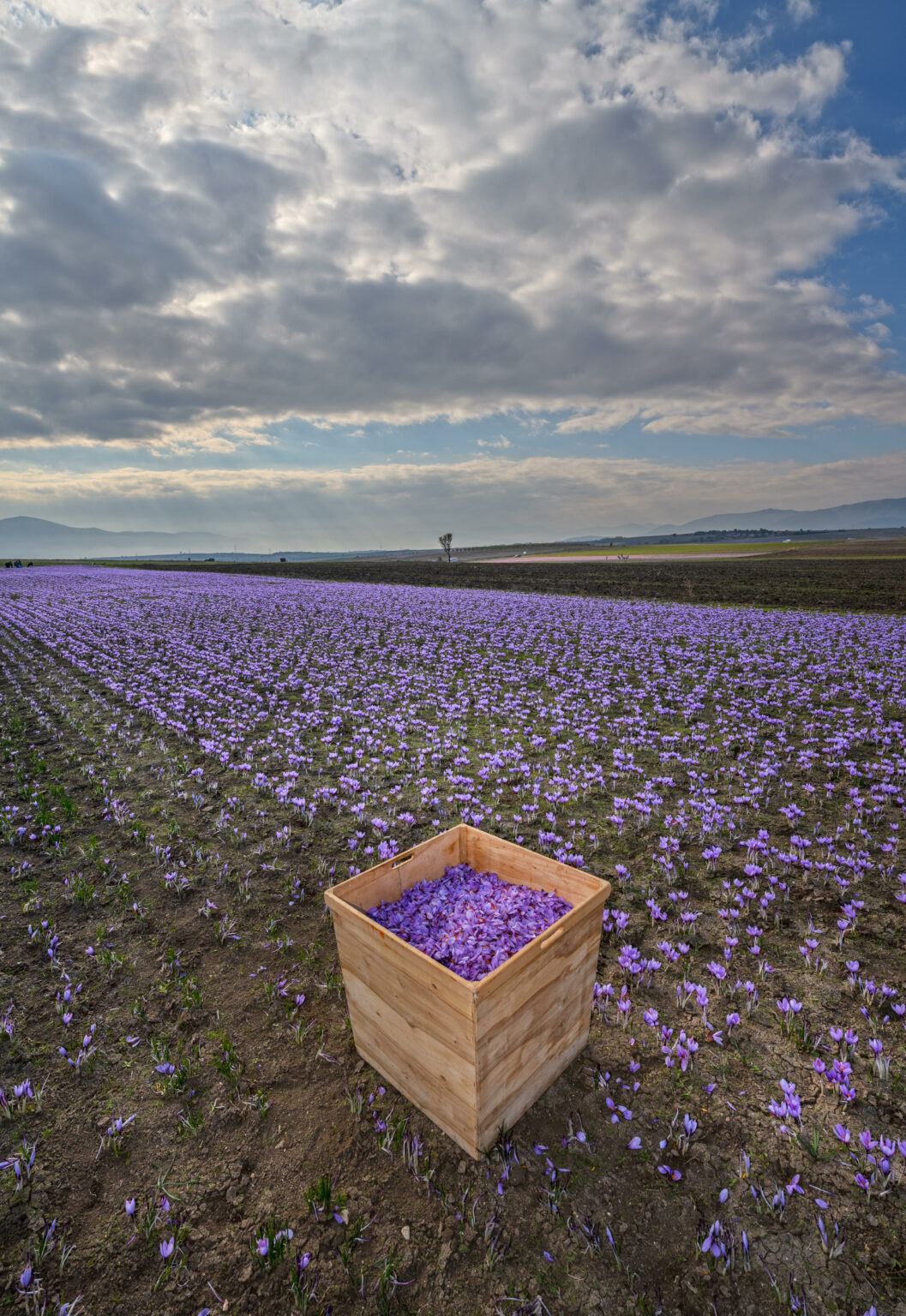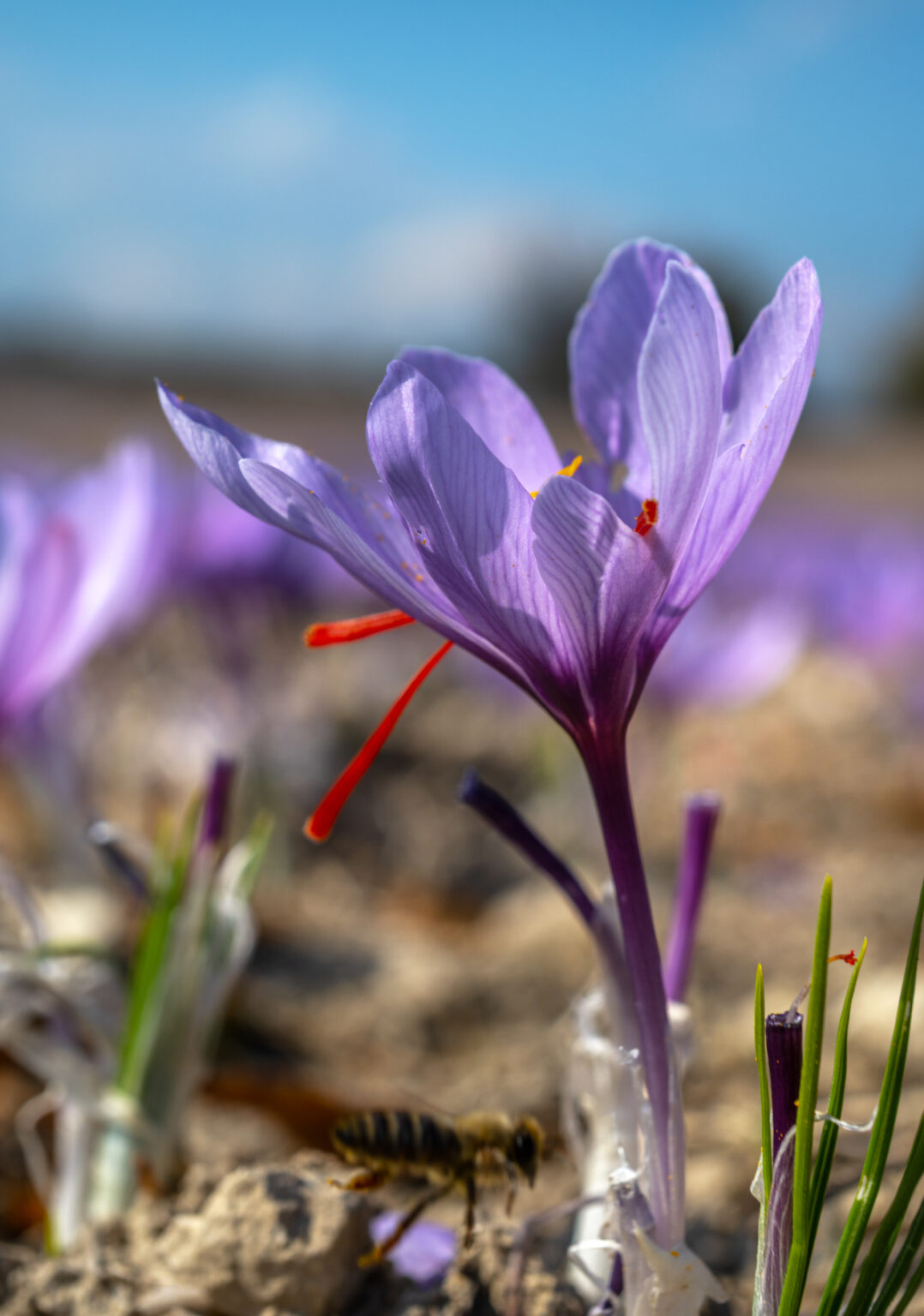In Western Macedonia amid the famed crocus villages of Kozani striking swathes of purple cover the fields. It is blooming season for the gold of the Greek land, as crocus is known, and the air is scented with the flower’s deep aroma.
The Saffron crocus is the flower that produces one of the most expensive spices in the world. The Greek saffron from Kozani’s crocus is PDO (Protected Designation Origin) and is regarded as some of the best available.A fresco in the palace of Knossos (1.600 B.C.) of a young child picking crocus flowers shows that saffron was one of the most popular and valuable spices of antiquity, for its scent, its colour and its medicinal and aphrodisiac properties.
The epicentre of crocus farming is the aptly named village of Krokos, 5 km southwest of Kozani with about 3.000 residents, most of them crocus farmers and members of the “Cooperative De Safran / Crocos – 50010 Kozani”. Other crocus villages in the area are: Ano Komi, Kato Komi, Kariditsa, Agia Paraskevi, Aiani, Vathilakos, Kesaria, Lefkopigi etc.
The purple carpet
The fragrant purple crocus carpet that covers hundreds of thousands square metres in the southern area of Kozani, from the Tsarsampas valley to the Polyfytos lake, is increasingly becoming a tourist attraction, especially popular with both professional and amateur photographers.
The crocus farmers work tirelessly in Autumn, hand picking the stigmas of this beautiful flower in order to dry them. The deep crimson threads are then processed and traded by the Cooperative. Around 50.000 stigmas are needed for 100 gr of red saffron and that helps to explain why it is so expensive and sought-after globally.
The crocus bulbs are planted in the middle of the summer and the blooming period starts in October until mid-November, when the picking of stigmas has to be completed as the cooler weather affects the quality of the saffron.
The farmers spend hours daily bent in the endless purple fields, carefully picking the crocus blossoms before they wither, as they are very fragile. The naked fields will be covered in purple again at dawn the next day as more bulbs bloom. The image of farmers bent-double picking crocuses in the field is a favourite subject for photographers who visit the crocus villages of Kozani every year during this period.
Argiris Karamouzas from Kozani is a health visitor by profession, but also a photography aficionado who captures the purple fields and the tired faces of the local farmers.
“Taking photos of crocuses up close, you see first-hand the hardships and stress that people in the crocus business face, rushing to pick the flowers before the weather turns, as time limits are tight. On the one hand, the risk of the flowers being destroyed by a sudden storm, and on the other, the difficulty of the harvest, as each crocus is less than 10 cm tall and needs to be handpicked, is stressful” he tells Travel.gr.
After the stigmas are removed from the blossoms
The fresh stigmas are placed in thin layers on silk sieves, and they are then transported to well-ventilated spaces. All these tasks are done exclusively by hand and take between 20 and 60 days. After the stigmas dry, the product is sorted, cleaned, and delivered to the Cooperative; this process needs to be completed by the end of March.
Once the saffron is delivered to the Cooperative, it is checked for moisture levels, due to the danger of fungus transmission, something that would degrade the quality of the product. The moisture level should be between 8 and 11.5% at most. Also, additional checks are performed to ensure that there is no contamination in the saffron or that the pollen levels aren’t too high.
Once the saffron successfully passes all checks, it is packaged. It is bundled in packages of 1, 2, 4 or 28 grams to be used in cooking. However, it can also be sold in smaller quantities in the form of powder – between 0,25 to 1 gram.
Saffron is used mainly in cooking, in small quantities due to its strong flavour. It is often used to cook rice to accompany fish or chicken, for example. However, due to its strong pigmentation, particularly strong in Kozani saffron PDO, it is also used in the production of dyes or in dying fabrics. Due to its medicinal properties, saffron is also used in the production of cosmetics or pharmaceuticals.
Some of the benefits of saffron
• It relieves stomach-ache
• It soothes kidney pains
• It stimulates the appetite and facilitates digestion, while it limits convulsions, nervous colic and whooping cough
• It cures pimples and helps with acne
• It has antidepressant, anti-aging and cancer combating properties
• It improves memory and brain functions
• It reduces cholesterol and is antithrombotic
• It reduces blood pressure
• may improve cognition in adults with dementia or Alzheimer’s disease.
• It helps with asthma attacks and nausea, it reduces pms symptoms, and even relieves during teething.
• It has aphrodisiac properties
Since the 17th century
Crocus has been grown in the area of Kozani since the 17th century when the Kozanite merchants, who traded in central Europe, imported the plant from Austria. Today around 500 acres in the south Kozani villages are used for the cultivation of crocus, with 30% being organic. Most of the harvest is sold abroad; to Europe, the USA and Australia, while some of it is also exported to China.
To enjoy the purple fields of Kozani, head south from the village of Krokos, either by remaining on the main road or by taking one of the side streets. Krokos is 6 km away from Kozani, 130 km from Thessaloniki and 466 km from Athens.
You can sample and buy various saffron products either direct from the Cooperative (tel.0030 24610 63283) in Krokos, or through their e-shop where you will also find recipes for unique dishes, sweets, homemade herbal teas, and juices with the addition of saffron.
Read also:
An island-like Greek village enjoying magnificent sunsets
Life with 60 cows at a village with less than 10 residents – Kozani area farmer explains



